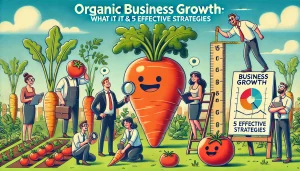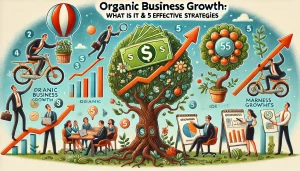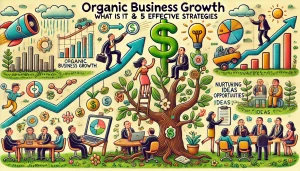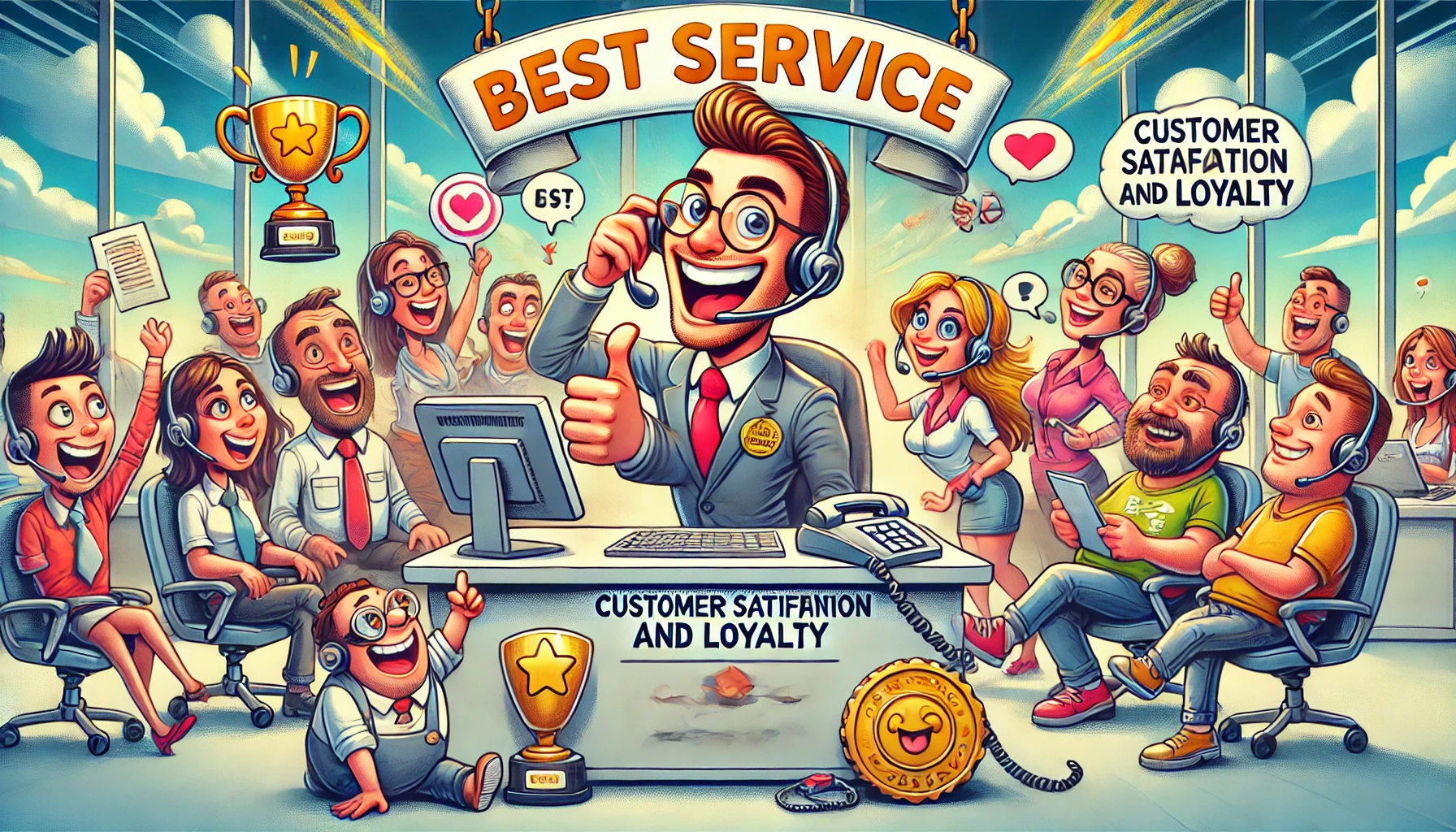Natural expansion strategies for businesses: unlock sustainable success

Strategies for organic growth in local businesses
As a local business owner, you’re likely familiar with marketing hype that promises quick success. Instead, you’re seeking genuine, sustainable growth strategies that give you control over your business decisions and trajectory.
Organic growth, increasingly favored by local businesses, offers a path to expanding revenue while maintaining independence. This guide explores what organic growth entails and how to harness its potential effectively.
What is organic growth?
Organic growth refers to the expansion of a business through its own efforts and resources rather than through acquisitions or external funding. This type of growth focuses on enhancing internal operations and leveraging existing assets to boost sales and revenue. Key methods include:
Hiring and training new staff: Strengthening your team improves service quality and operational efficiency.
Opening new stores: Expanding your physical presence helps reach more customers.
Establishing additional production facilities: Increasing production capacity meets growing demand.
Expanding marketing initiatives: Enhancing marketing efforts attracts and retains customers.
Developing new products: Innovating with existing employees diversifies offerings and addresses new customer needs.
Advantages of organic growth
Organic growth offers several benefits:
Control over decisions: Relying on internal resources allows for direct control over business and branding decisions. This autonomy enables quick pivots and adjustments when needed.
Attracting new customers: Internal improvements enhance all aspects of your business, drawing in a diverse customer base and increasing revenue.
Financial health: Organic growth promotes prudent cash investment, reduces debt, and minimizes risks. Investments are directed towards stable and predictable outcomes.

Organic vs. inorganic growth: Understanding the differences
In contrast, inorganic growth involves expanding through external means such as mergers, acquisitions, or significant external funding. Although this method can accelerate growth, it often comes with challenges:
High financial outlay: Significant investment is required for mergers or acquisitions.
Operational complexities: Merging operations can be complicated, involving system integration and potential disruptions.
Layoffs and cultural integration: Acquisitions may lead to layoffs and cultural clashes between merging entities.
For local and growing businesses, organic growth is often more suitable due to its efficiency, cost-effectiveness, and sustainability. It leverages existing assets and builds on your brand’s reputation.
Five strategies for successful organic growth
To drive organic growth effectively, consider these strategies:
Reduce costs: Conduct a thorough audit of expenses to identify areas for cost reduction. Redirect savings to more profitable activities.
Enhance operational efficiency: Streamline business operations and performance metrics to eliminate inefficiencies.
Target a specific niche: Focus on a well-defined market segment that differentiates you from competitors and meets underserved needs.
Understand your clients: Research your target audience thoroughly to avoid missing key demographic groups. Develop detailed customer profiles and gather direct feedback to refine offerings.
Innovate Your Product Line: Update existing products or introduce new services tailored to specific customer needs identified through your research.

Low-budget marketing strategies for organic growth
Effective, low-cost marketing tactics can drive organic growth significantly:
Text marketing
Utilize text messaging, which boasts a 209% higher response rate compared to other communication forms, to streamline customer interactions and enhance convenience (source: [Text Marketing Research, 2023]).
Leverage customer reviews
Actively encourage customer reviews, as 70% of consumers consider them crucial (source: [Consumer Review Statistics, 2024]). Simplify the review process through text messages.
Implement referral programs
Transform customers into advocates by rewarding them for referrals, amplifying word-of-mouth marketing.
Focus on customer retention
Prioritize exceeding customer expectations to foster loyalty and retention, which are crucial for sustainable growth.
Crafting a comprehensive organic growth strategy
Achieving organic growth involves a dynamic and adaptable approach:
Understanding the path to organic growth
Develop a growth strategy that outlines your expansion path while adapting to external factors such as market trends, economic conditions, and technological advancements.
Setting goals and conducting research
Establish clear business development goals and conduct thorough market research to inform your growth strategy. Consider factors such as political climate, economic trends, and societal shifts.
Review and adapt strategies
Regularly revisit and adjust your growth plan based on new data and evolving market conditions to ensure continued relevance and effectiveness.
By focusing on internal resources and capabilities, local businesses can achieve sustainable expansion and significant revenue growth without relying on external funding sources.

Expert opinions on organic business growth
Nina Patel, business growth consultant: “Customer retention is crucial for organic growth. Businesses should focus on building deeper relationships with their existing customers through improved customer service and engaging loyalty programs. Happy customers are more likely to make repeat purchases and generate valuable word-of-mouth referrals.»
Carlos Gomez, head of strategic development: “Product diversification can drive organic growth by providing existing customers with more value and attracting new ones. This strategy involves expanding your product lines or improving existing products to better meet the needs of your market. It’s essential, however, to ensure that these expansions align with your brand’s core values and mission.»
Michael Chen, chief operations officer: “Improving supply chain efficiency is a direct route to enhancing organic growth. Streamlined supply chains reduce waste, cut costs, and improve customer satisfaction by delivering products faster and more reliably. This strategy requires constant review and adaptation to new technologies and processes.”

 5 min
5 min 







